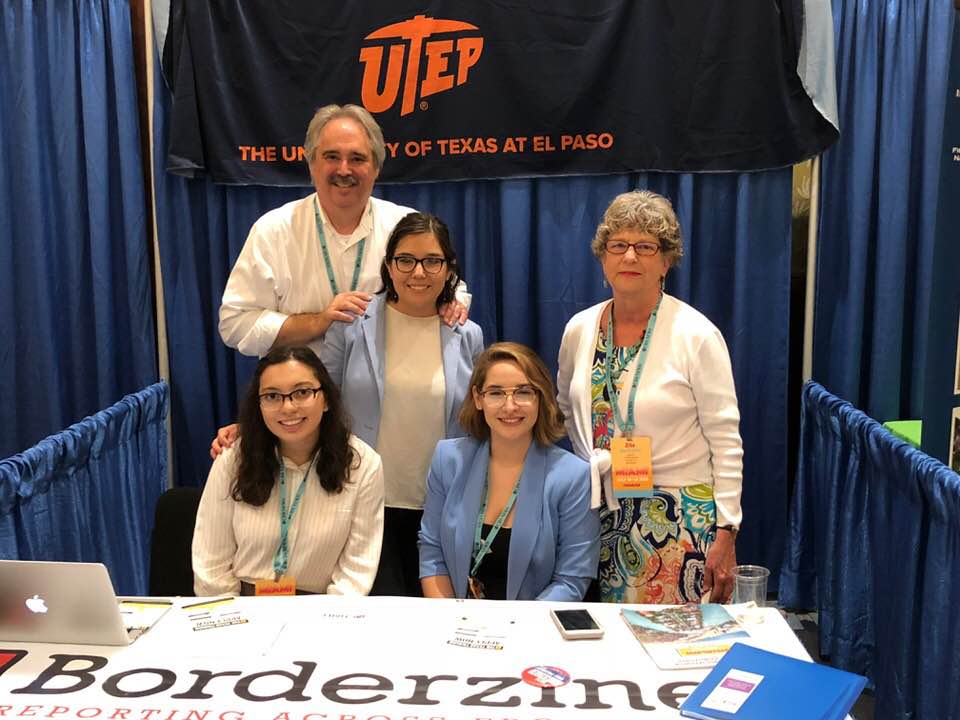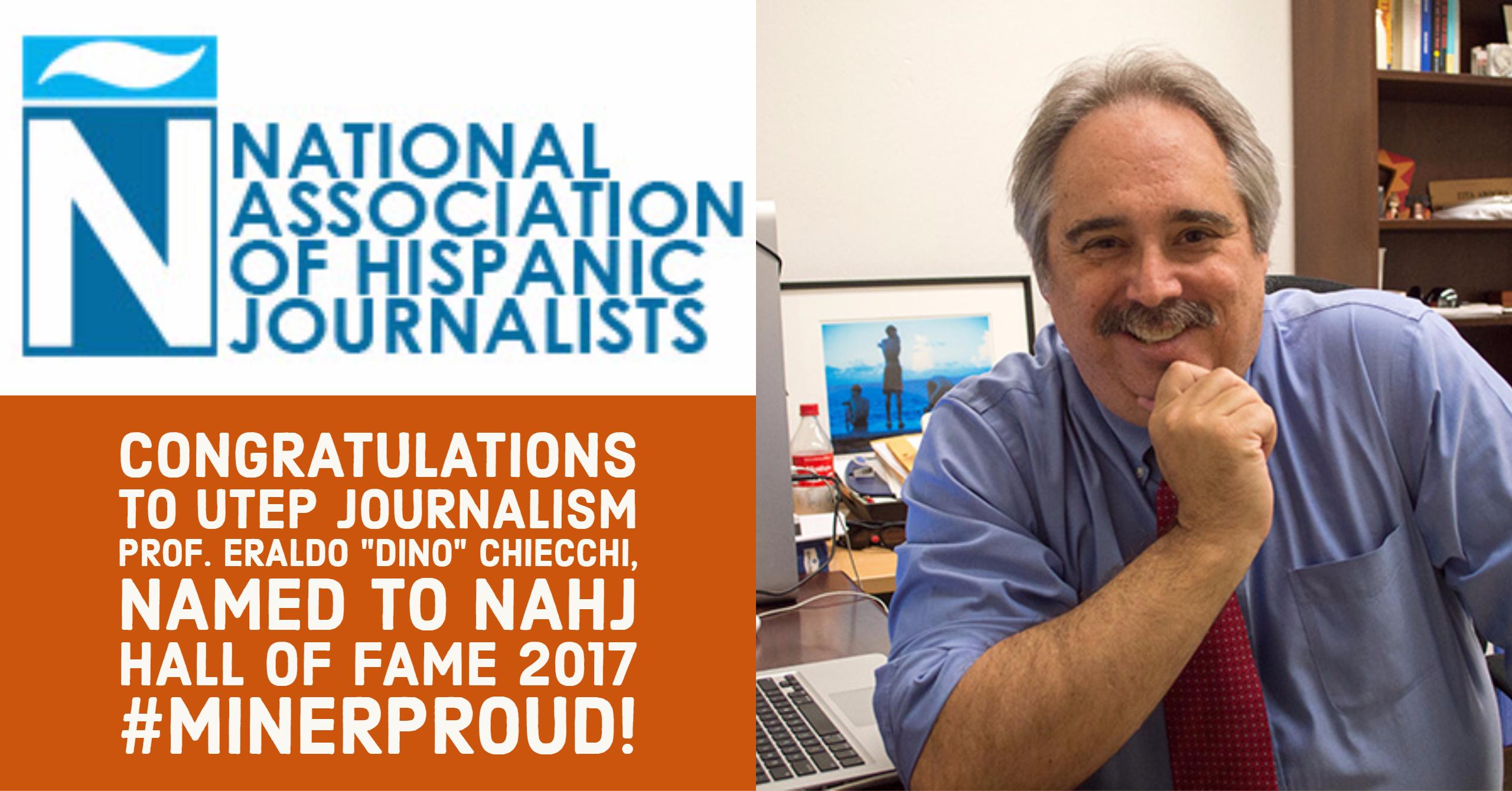Borderzine note: Our publication is more than a website that covers life along the border. It is a training tool that gives aspiring journalists from El Paso and Ciudad Juarez a real newsroom experience in multimedia reporting. This month we are asking readers to help us in our mission by making a contribution on Borderzine’s behalf to NewsMatch. Thanks to NewsMatch and two other organizations that support diversity in news, every dollar donated before Dec. 31 will be tripled. Your gift will go toward giving young people from our border community the tools and experience that are critical to their success as the journalists of tomorrow who will bring us the kind of informed reporting we needed for a healthy and strong democracy.
I am a proud El Pasoan, born at Providence Memorial Hospital and raised in Sunset Heights, long before it became fashionable and was a neighborhood composed mostly of middle-class Hispanics. I was the only son and second child of a single mother who like many Latino women, cared for her mother at home while she raised her two children without the help of child support from my father. He was a patent-holding electrical engineer in what eventually became Silicon Valley.
I grew up in a bubble and loved my bubble. Sunset Heights and my eventual expansion to the West Side was my home. I didn’t think much about the outside world. Everything I needed was near our apartment at 316 W. Rio Grande Avenue where I grew up.
St. Patrick’s Elementary School was less than a 15-minute walk away. My eventual high school, El Paso High School where I graduated in 1979, was not much farther away. The Sunset Grocery was on the other side Rio Grande where the street changed names to Los Angeles, and even Johnny’s convenience store was down the block on El Paso Street. A Safeway near the El Paso Public Library filled the refrigerator and cupboard every Wednesday after my grandmother shopped on double-coupon day.
As a result, my bubble was tight. It expanded when I began attending UTEP. By then, we had moved to a duplex off North Mesa near the King’s Hill Apartments, but I was still close to all I knew. My UTEP friends were clearly more worldly than I was. Most were El Paso natives, but came from different high schools, had different ideas and encouraged me to join a fraternity.
My new schoolmates told stories of where they’d visited, summer vacations they’d taken with their parents, where they had lived and planned to live after graduation. All this was new to me. My UTEP relations were expanding my mind. One of my friends invited me to a Halloween party in Fabens. I was in the boonies – as far as I was concerned – and I was alone in my 1979 Datsun mini pickup driving east on Interstate 10. I had pierced the eastern edge of the city limits. This was the farthest east I’d ever traveled. I was 20 years old. Prior to that, my eastern journey was likely Cattleman’s steakhouse in Fabens for a day-trip with my high school class.
Moving on to the big, wide world beyond the Borderland
On the drive to the party, I had a rare introspective moment and realized that while I had a great deal of respect for my Clint brethren, it should not be my most eastern destination. I made a decision that day this would change. And it did.
Two professors opened my world. One helped get me elected to the national board of the Society of Professional Journalists as a student representative and the other helped introduce me to potential internship opportunities out of El Paso. Before long, I was travelling to Los Angeles for a job fair conference, San Francisco and Milwaukee to attend board meetings with SPJ and the world began to open – all thanks to the influence of my UTEP professors. There was a world outside the bubble and I was liking it.
I started working at the late and often lamented El Paso Herald-Post while still in school and then full-time after I graduated. One day the phone rang. It was the Austin American-Statesman city editor, asking if I was interested in a police reporter position. I was energetic, bilingual and loved covering police. He’d heard about me from a fellow contact from the Los Angeles job fair conference I had recently attended. I sent him my clips – examples of my work – and was effectively hired over the phone. I was leaving my hometown, my family and the protection of the bubble. I could thank UTEP and those professors for showing me a bit of the world. I had a packed garment bag.
Through the years, I’ve worked at the San Antonio Express-News, the Associated Press in Dallas, Tucson Citizen and even the South China Morning Post in Hong Kong. I remembered that experience in Clint and wanted to go even farther east. I ended up on the southern coast of China for a three-month stint and met some lifelong friends.
A lifelong commitment to greater diversity in news
Through the years, I remembered those who came before me, especially the pioneering minority journalists who paved the way. I joined and took leadership roles in Hispanic journalist organizations in El Paso, Austin, Dallas and other cities. I was a founding member of the San Antonio Association of Hispanic Journalists and led that organization for a number of years.
I eventually was elected president of the National Association of Hispanic Journalists – one of that organization’s early presidents. I remain on the board of directors of the Associated Press Managing Editors after having served as president. I chair that organization’s scholarship committee. The APME is committed to diversifying Texas newsrooms and we select minority students for summer internships. UTEP students have often been selected for this internship, which often takes them to bigger and better places.
I owe much to the professors who came before me – the late Jim Patten and Ramon Chavez. I would not be where I am now if not for their guidance, encouragement and tutelage.
I have followed in their footsteps and stand on their shoulders. I am an associate professor in the very classrooms where they taught me at UTEP. The lessons they taught me are clear in my mind and I try to repay the favors they did for me every day.

UTEP professors Dino Chiecchi and Zita Arocha with UTEP students at NAHJ 2018 conference in Miami.
I’ve taken my students to Washington, D.C., Anaheim, Calif. and Houston for journalist conventions. We’ve gone on photography field trips to Ruidoso and San Antonio, N.M. Our mission as professors is not to merely teach the contents of a textbook. It is to open the eyes and minds of our students, many of whom have never left the city, never seen an airline booking pass, or been to Ruidoso Downs to photograph the horse races or Ski Apache to photograph skiers or for any other reason.
I owe so much to the university of my life’s work, and I am grateful to have the opportunity to repay the school through my students for all that UTEP has given me.
Cheers.
Dino Chiecchi
Associate Professor of Multimedia Journalism



